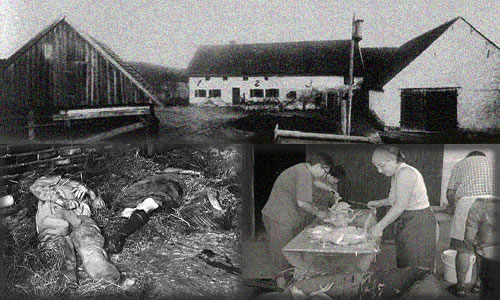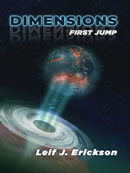Adventure, Inspiration, Mystery, Sci-Fi, Technology, Teleportation
Teleportation
Teleportation
It seems that not a day goes by where we hear about the environmental costs of our transportation network. Be it from the companies that extract oil out of the ground, the manufacturing of cars and trucks, or the vehicles themselves, burning fossil fuels on the road, our concern with the environmental footprint of our transportation network is constantly under the microscope. But what can we do? What other methods of travel are available to humans that could provide the same ability to get where we need to go quickly, without pollution, and in a safe manner? One such idea, albeit an extreme one, is teleportation.
Teleportation is the act of making a person or object disappear from one location and having it reappear in a completely different location. Teleportation has been a favorite devise of Science Fiction writers for years, making a huge impact in the Star Trek television series. What most people don’t know is that the term, ‘teleportation’ and the concept behind it was brought into the mainstream consciousness in 1931 by Charles Fort.
Fort hypothesized that a mysterious force could transport matter, objects, and living beings from one location to another without seeming to travel the distance between the two points. This force would also allow one to manipulate objects from a distance. Fort used this hypothesis to explain apports, or the sudden appearance and disappearance of objects in the presence of a medium. Although Fort never defined the force that was being used, his research did gain some traction and investigation by other scientists.
By 1945, Fort’s teleportation hypothesis was being used by various scientists like Harry Price to explain the recent rash of reported poltergeist activity. Price and other’s reasoned that if teleportation did exists, then it would be a logical conclusion that in the distance between the starting point and the ending point that the object or person being transferred could make partial appearances. This would explain the activity of someone seeing a person that wasn’t fully there, or that was clear enough to see through. It could also explain disembodied voices being heard.
Interestingly enough, with Science Fiction and as advanced technology as teleportation is, the concept first appeared all the way back in 1877 in the Edward Page Mitchell book, The Man Without a Body. When looking at the technology used and written about in that era, the concept of teleportation is amazing, almost looking more like magic than actual science.
In actual scientific circles however, many scientists will admit that the concept of teleportation is beyond our understanding. There are simply too many variables to consider and we do not have the technology to overcome all the obstacles. Some scientists will say that we can never overcome all the obstacles that teleportation offers. The scientists say that the risks involved would be too great and there would be no way to mitigate the risk to the point where teleportation could be commercially viable. Other scientists want to push the envelope and try to find a way.
The most common process thought of in teleportation would involve two separate process: dematerialization and rematerialization. In the first step, an object would need to be broken down into its basic elements, broken down to the molecular level. The binding energy of all the atoms and the nuclei would need to be broken apart so it could be sent to the new location. The energy required to accomplish this would most likely be enough to destroy whatever you were trying to teleport.
The next step, rematerialization, is even more difficult. All the parts need to be put back together in the exact right order, in the exact right place, and they all must be working together again. Once again, the energy needed to bind everything together would have the potential to destroy all the cells and their functions. In the case of a living creature, not only would all the little pieces of that person need to find their right place to be bound together and activated, the memories, personality, and soul of the person would have to be transferred with it.
This is where the Heisenberg Uncertainty Principle comes in that stops most scientists from believing teleportation is possible. The Heisenberg Uncertainty Principle, in general terms, says that you can either know what an atom is doing or where it is, but you can’t know both. This harkens back to the theory that whatever you observe you fundamentally change. If you study the location of an atom, you are going to interfere with what it’s doing. If you study what the atom is doing, you will change where it’s at. This is unfortunate because to transport someone with a teleporter, you must know where every atom is and what it’s doing simultaneously.
The amount of memory that would be needed to document the location and activity in real time of every atom in the human body would be staggering. There isn’t processors that could access and process the information fast enough to make the transporter work. Scientists who believe that one day we’ll be able to transport around the world with our own teleporter devises say that technology will get around all these hurdles. That one way or another, we will crack the code that will allow teleportation.
Another method that has been discussed and looked at for methods of teleportation is a replication system. Also developed in Science Fiction writing, the replication system says that the mind, memory, and soul of a person could travel into a replicated body. There are variations to the theory, as to how the replicated body could be made, and how to get the memory and the soul to attach to a new body, but it is a system that is also being looked at as a possibility for future travel.
One of the main concerns with teleportation is how it could be used for evil. How many people, once they are able to teleport, would transport themselves right into the bank vault? They could sneak in, steal as much as they want, and escape. This goes for homes as well. Could we really be safe if at any time someone could materialize behind us? Think of the military applications. It would become extremely easy for an assassin to carry out their work, easily getting around the heaviest of security. Teleportation would develop the need for an entirely new security system.
Although most serious scientists laugh at the idea of man actually being able to teleport from one place to another, there are some in the scientific community who believe that it’s possible to teleport. Belief and someone with money to believe in you is all that is needed to start testing. Join me next week on this blog when I take a look at some of the legends, rumors, and startling discoveries that we have made about teleportation.
To see how teleportation has influenced my Science Fiction writing, head over to my website, www.leifericksonwriting.com and buy my books today.
David Darling (29 April 2005) Teleportation: The Impossible Leap. John Wiley & Sons. ISBN 978-0-471-71545-0.
Lawrence M. Krauss (1995), The Physics of Star Trek, Basic Books, ISBN 978-0465002047.
Rickard, B and Michell, J. Unexplained Phenomena: A Rough Guide Special. Rough Guides, 2000. ISBN 1-85828-589-5.



























Leave a reply
You must be logged in to post a comment.